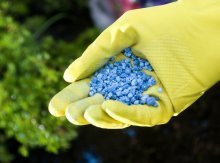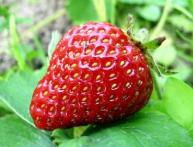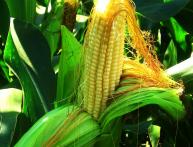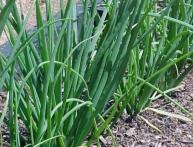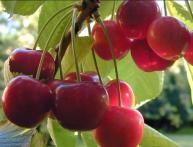What are mineral fertilizers, the benefits and harms of their use
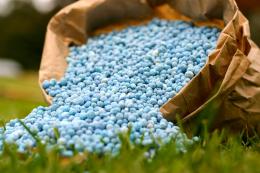
Already ancient representatives of the plant world, who appeared on earth more than 400 million years ago, had special cells that helped them exist on the planet. With their help, plants could absorb water, mineral salts and atmospheric gases. From all these inorganic substances, under the influence of the energy of the sun, plants synthesized organic compounds, all of which gave them the opportunity to grow, develop and multiply.
For normal growth and fruiting, modern cultivated plants require regular feeding. They can additionally obtain the necessary substances from fertilizers. Let's try to find out what mineral fertilizers are and what they are needed for.
Content:
- Description of mineral fertilizers
- The benefits of mineral fertilizers, the harm from their excess
- Modern mineral fertilizers
Description of mineral fertilizers
Modern plants in the processes of converting inorganic substances into organic ones are similar to those that grew on earth millions of years ago. Today they also need water, atmospheric gases and minerals. Wild representatives of the flora have enough inorganic substances that are formed naturally. Growing cultivated plants is another matter.
Their need for inorganic substances is much greater, since they must create reserves of nutrients in fruits or seeds. In addition, when regularly growing the same crops on the same land, it can greatly deplete the soil and serve as the main reason not only for a decrease in the quantity and quality of the crop, but also cause a decrease in plant tolerance to diseases and pests.
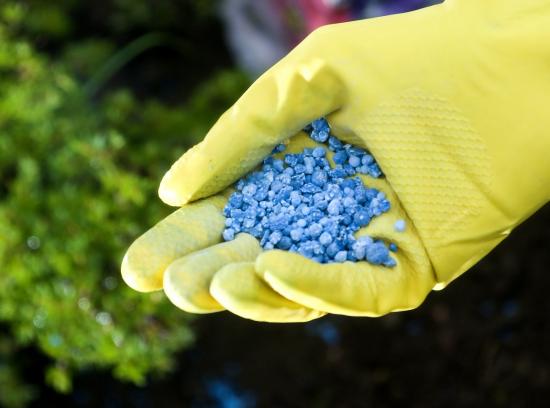
Mineral fertilizers can be defined as inorganic chemical compounds with a high content of substances necessary for plant life. The necessary inorganic elements of mineral fertilizers must be included in salts that are readily soluble in water.
First of all, mineral fertilizers must contain the following three chemical elements in a form accessible to plants:
- N - nitrogen
- P - phosphorus
- K - potassium
Therefore, plants need to be fed with potassium, nitrogen or phosphorus fertilizers. If a mineral fertilizer contains salts of only one element, then such a fertilizer is classified as simple. They are also called one-sided. When there are two or three active ingredients, then such a mineral fertilizer classified as complex or multilateral.
Simple nitrogen fertilizers include primarily ammonium nitrate and urea. Potassium chloride belongs to potassium fertilizers. Phosphorus rocks include phosphate rock. It is most convenient to use not one-sided, but multi-sided mineral mixtures.
The benefits of mineral fertilizers, the harm from their excess
The lack of nitrogen in the soil directly affects the general condition of the plant and its fruiting. With a lack of this element, plants stop growing, leaves lose color and turn pale. Productivity drops sharply. The plant may even die. Due to the fact that nitrogen can be washed out by water, it should not be added in the fall.It is optimal to apply nitrogen several times during the growing season.
It must be remembered that an excess of nitrogen mineral fertilizers can cause a lengthening of the growing season without the formation of fruits and seeds and cause an excessive growth of a large mass of above-ground parts. With a lack of phosphorus, the leaves darken, become dark red, fruiting and ripening are delayed. Most often, plants lack phosphorus at acidic soils.
The situation can be changed by adding phosphates. An excess of this element does not have serious consequences either for the plant or for humans. It is absorbed by plants as needed.
A lack of potassium in the soil harms the above-ground parts of plants. The leaves begin to dry out at the edges, the shoots become thin, and the whole plant becomes smaller. With a lack of potassium, the plant loses its endurance and winter hardiness. An excess of potassium is harmful because plants begin to poorly absorb nitrogen. With an excess of this substance, the leaves become lighter, a mosaic appearance appears, and the leaves fall off.
Currently, all fertilizers are produced in chemical plants. Both dry mineral mixtures and liquid solutions are supplied to the trading network. In addition to the usual forms, there are also new modern forms of mineral fertilizers.
Modern mineral fertilizers
Traditional mineral fertilizers can be applied to the soil in two ways:
- in dry form soil
- in the form of an aqueous solution for watering and spraying

However, modern industry has launched the production of complex fertilizers in the form of sticks. Victoria nutritional mineral sticks for plants include not only the above elements, but also:
- copper
- boron
- magnesium
- manganese
The sticks come with instructions; they are most often used for perennial berry crops. For strawberries or strawberries, in the fall it is enough to stick a stick under the root along its entire length. The next application of mineral fertilizing with Victoria sticks will be required in a year. Vegetable sticks are intended for feeding vegetables, starting from the phase of 5 - 6 true leaves on cucumbers, zucchini, melons, watermelons.
They operate throughout the entire period of crop growth and ripening. For tomatoes, peppers, and eggplants, sticks are introduced 10 days after the seedlings are transplanted in open ground. The advantages of this form of mineral mixtures are that they contain the entire set of elements that are absorbed by the plant gradually.
Mineral fertilizers in the form of sticks are convenient for those plant growers who cannot often visit their site and apply mineral fertilizers in a timely manner. The decision on whether or not to apply mineral fertilizers remains with gardeners, vegetable growers, and flower growers.
Video on how to choose mineral fertilizers:

